
Hey team, Adam here. Welcome to our 2021 blog here at Whaling City Solar. This unique “Engineers View of the Big Picture” series of articles are a witness statement on why my wife and I put solar power on our house and why I’ve chosen solar as my profession. I genuinely believe you should take a look how a solar system pays for itself before writing it off as a too expensive or a trend, but I also want to show why. More so than our other articles, this series is written in my language – half Dad and I’s engineering background, and half Mom’s teaching background. Both of whom taught me to never stop sharing knowledge.
Chapter 1 – The Humble Kilowatt – Hour
The humble kilowatt-hour (kWh). Confusing name for something that is so omnipresent in our lives. It’s a unit of measure, which allows us to “count” electricity which really flows around like a lazy river in the grid vs. a line of balls down the conveyor belt. When we get an electricity bill, we’re getting a series of charges per kWh that has been measured by the meter that sits between your closest electric pole and your home.
Take a look at the second page of your electric bill and you’ll see what I mean:
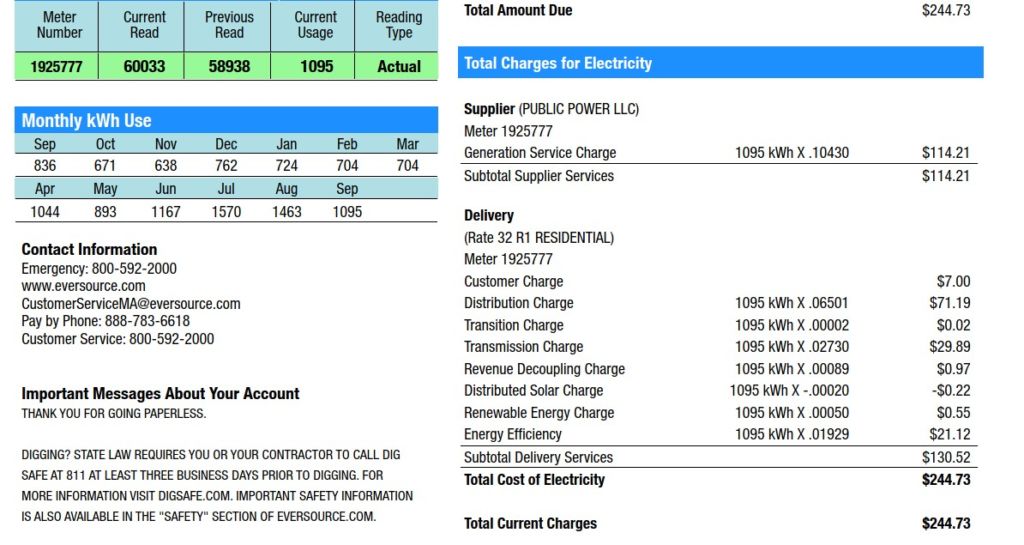
Most of us never even get this far to Page 2 right? Just pay the big number on Page 1 and go back to worrying about the rest of our lives. But haven’t you noticed that the bill has gotten bigger this year? And the year before that? Many blame their spouse/kids for using the hair dryer too much or keeping their room AC at the wrong temperature. While appliance usage does affect the number of kWh’s being pulled, there’s something much bigger going on with the rates. Right now, if you’re a standard residential customer in Eversource – you’re paying about 22¢/kWh, made up of about 11¢ of Supplier rate and 11¢ of Delivery rate. For now, I want to deeply engrain in your head that a utility bill is nothing more an amount of kWh for one month multiplied by the utility rates in $/kWh. And let’s be honest, unless we’re all planning on moving back into a cave – we’re going to be using kWhs for a long time!
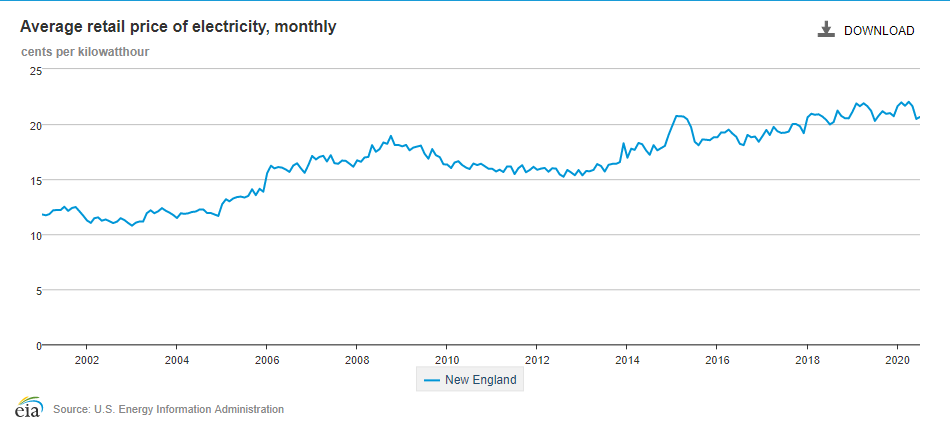
I’m sorry, but what exactly is a kWh again?
So in the bill example shown earlier, we see the home used 1095kWhs this September. Where does that number come from? It’s read off of the meter on the outside of the house that’s probably right outside your electrical panel in the garage or basement. The meter has a little current sensor in it that sums all power being pulled through that box full of breakers. As a homeowner, it’s tough to figure out what uses what, simply because you flip a switch things just work!
To make sense of what a house uses, home energy professionals use a combination of the speed an appliance “draws” electricity, which is measured in Watts (W), and the time that appliance runs in hours (h). This can be confusing because the terminology isn’t immediately intuitive. Using an analogy of our cars, it would be like calling the distance we traveled miles per hour – hours instead of just “miles”. The little “k” standing for kilo just means that there’s 1000W’s in one 1kW.

Thankfully most appliances take the math out of it for you, just look for the big yellow tags that list the kWh’s when you’re buying new appliances, like this fridge on the front page of Home Depot. See the kWh’s listed at the bottom of the yellow EnergyGuide tag?
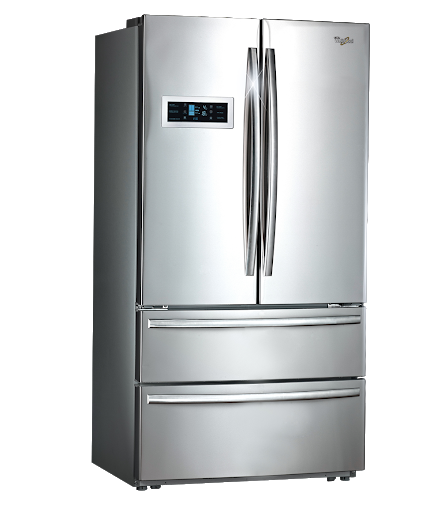
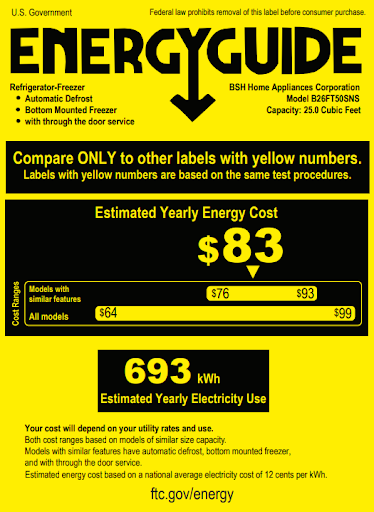
Where do those kWh’s go to in my house?
Your main service panel has many breakers, most with labels showing where in the house the outlets are that they’re hard wired to. Look familiar?
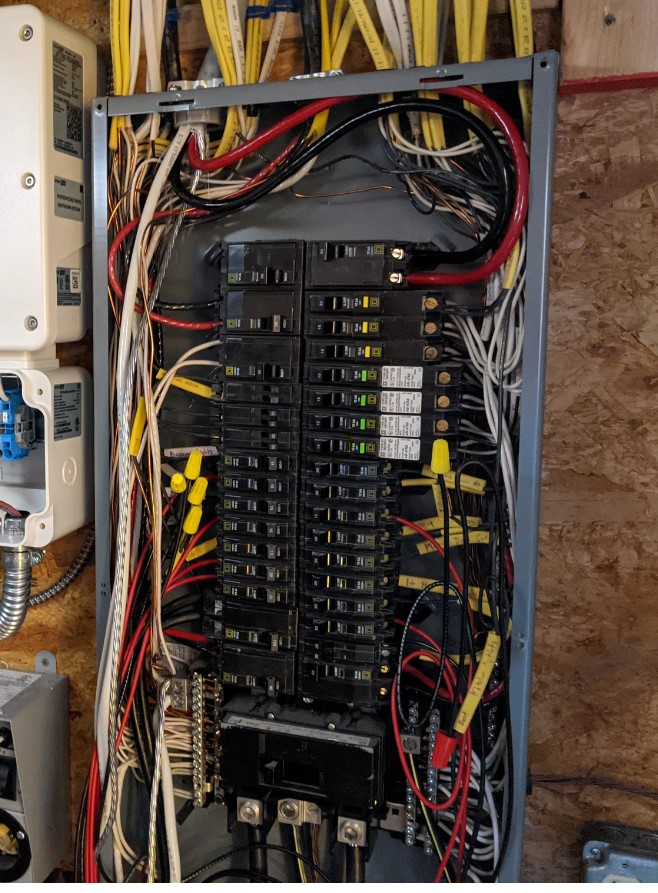
- Critical Loads – Things that we call your ‘Critical Loads’ should be given special attention and used as a baseline to consider as a minimum number kWh’s you’ll consume in a given month. We’re talking about things like lighting. A single LED light uses only 10 watts an hour – which means if you let it run 24 hours a day for a month, that’d be about $1.60. The Fridge/Freezer is pretty important too, and those of us with electric stoves or well pumps are going to want those available 24/7. Another “critical load” – at least to your sanity – is your Wifi Router.
- Heating and Cooling Loads – These are also super important, but a bit more variable based on your views of comfort. Doing the math quickly again – Take a standard 12,000 BTU window AC unit rated at 1000W. keeping that on for 1h, would draw 1000W-h or 1kWh. That’s 22¢/hour or $5.28/day if you played set it and forget it on a hot day. That’s per AC, and most of us have more than one! If we have old electric baseboard heat that plays in here too. If we’re using modern HVAC technology like an air sourced heat pump (also known as mini-splits) we can achieve better efficiencies, and also have the option to use it as heating on chilly fall and spring days. There’s a lot of fun math in here, but we’ll leave that for another blog post. This is the biggest draw for most houses, often somewhere between an extra 500-1500kWh for AC in the summer.
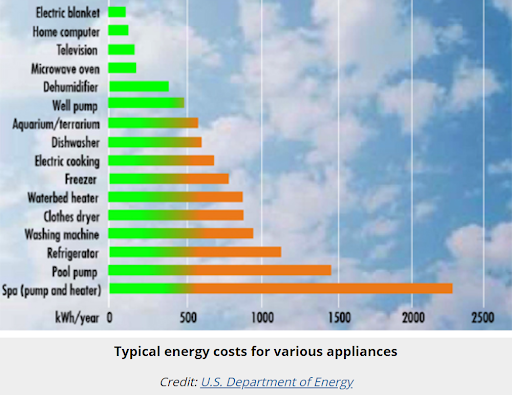
- Quality of life loads – Here we have our hot tubs, extra heater in the hobby shop, washer/dryer, dehumidifiers, dishwasher, home bitcoin servers(!), etc. These can add anywhere from 100kWh to 2000kWh+ to a monthly bill.
- Transportation Loads – A new category for the new decade. If you’ve taken the plunge to buy an Electric Vehicle or Plug-In Hybrid EV (I drive a Chevy Volt and John drives a Tesla Y if you want any first hand reviews) Every 12,000 miles driven equates to about 3,500kWhs. Again lots of fun math in here compared to gasoline costs, but that’s it’s own topic.
Cool, kWh’s. What does this have to do with solar?
Sorry, that’s really all I wanted to cover in Chapter 1. Our homes are filled with lots of circuits, and those circuits consume lots of kWhs to fuel the items that make our lives…well…our lives. Once you can properly value the kWh itself, you can make our own educated decisions about who you’d like to purchase them from or perhaps produce them yourself on your own property. Next chapter we’ll look at one option where to buy that power, and it’s a pretty popular one, the local power plants.

